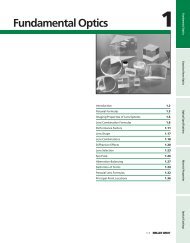Intel PXA250 and PXA210 Applications Processors
Intel PXA250 and PXA210 Applications Processors
Intel PXA250 and PXA210 Applications Processors
Create successful ePaper yourself
Turn your PDF publications into a flip-book with our unique Google optimized e-Paper software.
Introduction<br />
VSSN<br />
Table 1-3. Signal Pin Descriptions (Sheet 7 of 7)<br />
Name Type Description<br />
SUP<br />
Ground supply for memory bus <strong>and</strong> PCMCIA pins. Connect these pins to the common<br />
ground plane on the PCB.<br />
BATT_VCC SUP<br />
Backup battery connection. Connect this pin to the backup battery supply. If a backup<br />
battery is not required then this pin may be connected to the common 3.3v supply on<br />
the PCB.<br />
NOTES:<br />
1. Not pinned out for the <strong>PXA210</strong> applications processor.<br />
2. GPIO Reset Operation: After any reset, these pins are configured as GPIO inputs by default. The input buffers for these pins<br />
are disabled to prevent current drain <strong>and</strong> must be enabled prior to use by clearing the Read Disable Hold (RDH) bit.<br />
To use a GPIO pin as an alternate function, follow this sequence:<br />
1) Program the pin to the desired direction (input or output) using the GPIO Pin Direction Registers (GPDR).<br />
2) Enable the input buffer by clearing the RDH bit, described above.<br />
3) If needed, select the desired alternate function by programming the proper bits in the GPIO Alternate Function<br />
Register (GAFR).<br />
1-10 <strong>PXA250</strong> <strong>and</strong> <strong>PXA210</strong> <strong>Applications</strong> <strong>Processors</strong> Design Guide
















